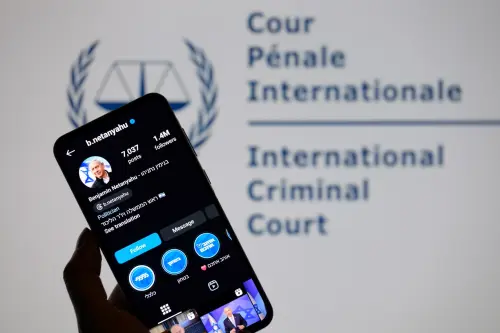If the Syrian conflict is a Gordian knot, so too is U.S. policy on the conflict. Secretary of State John Kerry’s persistent efforts to promote a diplomatic solution continue, while President Obama scrapped U.S. initiatives to arm local factions. Candidates for the Commander-in-Chief job, meanwhile, have advocated everything from safe havens to ground troops to “carpet bombing.” What are U.S. options in Syria, actually?
In a new article in The Washington Quarterly, Dan Byman, a senior fellow and director of research in the Center for Middle East Policy, outlines the spectrum of U.S. policy choices on Syria. At one extreme is isolation, at the other is a major military campaign. He considers plausible options in between—which, while politically more attractive, have their own pitfalls. But “all the options are bad ones,” writes Byman.
Interests and facts on the ground constrain U.S. policy in some ways, Byman writes, and U.S. politics constrain it in others—with the latter demanding “impossible contradictions” in some cases. Americans don’t want to put boots on the ground overseas, but are terrified of ISIS and may support a more active offensive against it, specifically. Any U.S. action on Syria would require working with other actors there, but most are “violent, anti-American, and just plain icky,” according to Byman.
Let me count the ways
Is there any way to reconcile these contradictions? Byman lays out six options:
- “Let it burn.” The enduring lesson that many Americans have learned from recent interventions in the Middle East is that the region is a quagmire. Maybe the United States simply isn’t cut out for intervention there, the logic goes. But as Byman points out, isolationism on Syria “has its costs beyond continuing the humanitarian tragedy”: namely conflict spillover which could raise the stakes throughout the region and increase the pressure for intervention.
- “Massive intervention.” At the other end of the spectrum, the United States could undertake a big military campaign in Syria, ideally in partnership with Europeans and regional powers. “The initial military challenge is real,” writes Dan, “but not overwhelming.” The benefits of a successful military intervention include crushing ISIS and the Assad regime, allowing Syrian refugees to return, and reducing the off-the-charts regional tensions somewhat. But a) would it succeed, given what is currently pretty paltry support for such a move? and b)what would the long-term outlook be, since “intervention would have to be a decades-long process”? That’s where it gets messy.
- “Work with allies to fight the Islamic State.” U.S. policy could focus just on the Jayvee team turned bête noire, a fight around which it has already gathered a coalition of over 60 countries. It’s a more palatable choice in the U.S. domestic arena and would rely heavily on air power. But ground operations would still be needed, if the territory ISIS currently holds is to be reclaimed. Local forces, so far, haven’t proven up to the task, and many are highly unsavory as U.S. partners.
- “Work with the devil we know?” Bashar Assad, and his father before him, “imposed a brutal order on the country in the past,” Byman writes. But the Syrian leader is pragmatic, perhaps making cooperation possible. The problems are that big U.S. allies like Turkey and Saudi Arabia wouldn’t have it, and it would further antagonize the Sunni Arab world and could provoke the wrath of ISIS—not to mention that it’s morally problematic to secure the power of a mass killer.
- “No fly zones, safe zones, and safe havens.” Intuitively appealing, safe zones offer protection for civilians and don’t seem as costly as an invasion. But Byman explains that the costs and risks are higher than they first appear: to protect safe zones, the United States would need to take out Syrian air defenses, thus entering the war against the Syrian government coalition. Beyond that, a ground presence would be needed to prevent massacres and ensure that opposition fighters aren’t using the zones to organize and arm. Finally, once the United States creates the zone, there’s no going back: it would be committing to people’s safety, “a promise that could very likely require decisive action” later on.
- “Contain the violence.” This option involves caring for Syrian refugees who have already left the country and helping resettle them overseas. It also means providing Syria’s neighbors with border security and counterterrorism assistance to limit the potential for the conflict’s spillover. But as Byman points out, “Containment is not only defensive”—it also requires measures (such as air strikes and support for opposition forces) that keep ISIS fighters busy at home, as well as diplomatic efforts to convince other regional parties not to get involved. “Containment is more a band-aid than a cure,” he concludes.
The choice among these alternatives is shaped at least in part by domestic politics: Americans don’t want big interventions, but will blame their leadership if there’s an attack in the United States linked to ISIS or another Syria-connected group. “The window for straightforward and low-cost interventions in Syria has closed,” Byman concludes, adding that some form of containment policy will be necessary no matter what. Beyond that, he acknowledges, all the options on Syria are, depressingly, bad.
The Brookings Institution is committed to quality, independence, and impact.
We are supported by a diverse array of funders. In line with our values and policies, each Brookings publication represents the sole views of its author(s).



Commentary
Why there are no good policy options on Syria
January 19, 2016